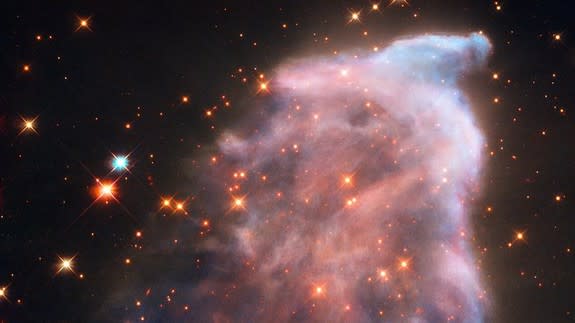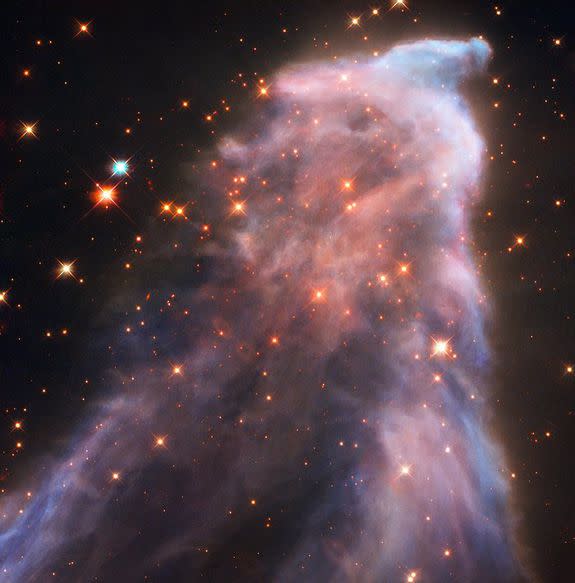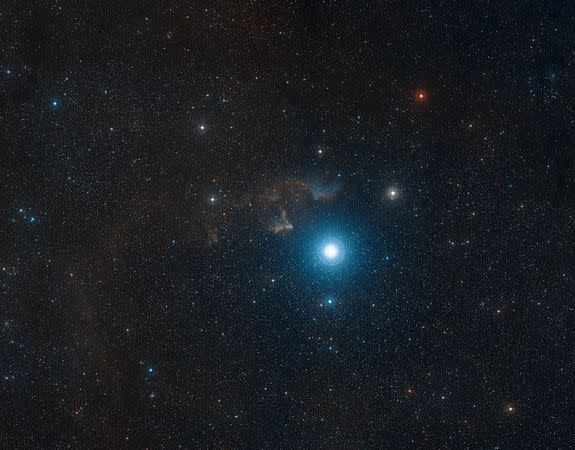The Ghost Nebula glows in new photo just in time for a spooky Halloween

Nearly 550 light-years away lies the Ghost Nebula, which haunts the constellation Cassiopeia like a shadow.
Named after a vain queen in Greek Mythology, the constellation Cassiopeia forms a highly-recognizable 'W' in the sky, with gigantic star Gamma Cassiopeiae marking the central point.
Radiation from the nearby Gamma Cassiopeiae is causing the nebula to dissipate, NASA said in a statement.

Image: esa/nasa Hubble telescope
In a new Hubble Space Telescope photo of the Ghost Nebula, you can see the bright contrast of dust and ionized gases, typically helium and hydrogen, against the lightless void of space.
Nebulas like the Ghost Nebula can be formed one of two ways.
They can either form from the remnants of the explosion of a dying star. Or they can form in regions where new stars are born, according to NASA.

Image: Esa/ Nasa hubble telescope
The Ghost Nebula is a part of a larger, nebulous region surrounding Gamma Cassiopeiae where stars are formed.
This large area becomes visible in the Northern Hemisphere throughout fall and winter, and takes up four times the space that the full moon does in the night sky.
WATCH: Scientists found a weird galaxy without dark matter


